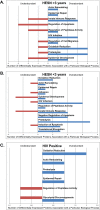Non-Cationic Proteins Are Associated with HIV Neutralizing Activity in Genital Secretions of Female Sex Workers
- PMID: 26090884
- PMCID: PMC4475052
- DOI: 10.1371/journal.pone.0130404
Non-Cationic Proteins Are Associated with HIV Neutralizing Activity in Genital Secretions of Female Sex Workers
Erratum in
-
Correction: Non-Cationic Proteins Are Associated with HIV Neutralizing Activity in Genital Secretions of Female Sex Workers.PLoS One. 2015 Jul 21;10(7):e0134196. doi: 10.1371/journal.pone.0134196. eCollection 2015. PLoS One. 2015. PMID: 26197227 Free PMC article. No abstract available.
Abstract
Objective: Cationic proteins found in cervicovaginal secretions (CVS) are known to contribute to the early antiviral immune response against HIV-infection in vitro. We here aimed to define additional antiviral factors that are over-expressed in CVS from female sex workers at high risk of infection.
Methods: CVS were collected from Kenyan HIV-seronegative (n = 34) and HIV-seropositive (n = 12) female sex workers, and were compared with those from HIV-seronegative low-risk women (n = 12). The highly exposed seronegative (HESN) sex workers were further divided into those with less (n = 22) or more (n = 12) than three years of documented sex work. Cationic protein-depleted CVS were assessed for HIV-neutralizing activity by a PBMC-based HIV-neutralizing assay, and then characterized by proteomics.
Results: HIV neutralizing activity was detected in all unprocessed CVS, however only CVS from the female sex worker groups maintained its HIV neutralizing activity after cationic protein-depletion. Differentially abundant proteins were identified in the cationic protein-depleted secretions including 26, 42, and 11 in the HESN>3 yr, HESN<3 yr, and HIV-positive groups, respectively. Gene ontology placed these proteins into functional categories including proteolysis, oxidation-reduction, and epidermal development. The proteins identified in this study include proteins previously associated with the HESN phenotype in other cohorts as well as novel proteins not yet associated with anti-HIV activities.
Conclusion: While cationic proteins appear to contribute to the majority of the intrinsic HIV neutralizing activity in the CVS of low-risk women, a broader range of non-cationic proteins were associated with HIV neutralizing activity in HESN and HIV-positive female sex workers. These results indicate that novel protein factors found in CVS of women with high-risk sexual practices may have inherent antiviral activity, or are involved in other aspects of anti-HIV host defense, and warrant further exploration into their mode of action.
Conflict of interest statement
Figures


References
-
- Devito C, Hinkula J, Kaul R, Lopalco L, Bwayo JJ, Plummer F, et al. (2000) Mucosal and plasma IgA from HIV-exposed seronegative individuals neutralize a primary HIV-1 isolate. AIDS 14: 1917–1920. - PubMed
-
- Jendrysik MA, Ghassemi M, Graham PJ, Boksa LA, Williamson PR, Novak RM (2005) Human cervicovaginal lavage fluid contains an inhibitor of HIV binding to dendritic cell-specific intercellular adhesion molecule 3-grabbing nonintegrin. J Infect Dis 192: 630–639. - PubMed
Publication types
MeSH terms
Substances
Grants and funding
LinkOut - more resources
Full Text Sources
Other Literature Sources
Medical

